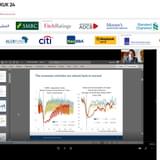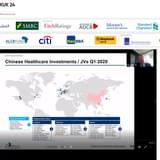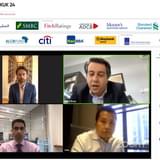Bonds & Loans: In what ways do Islamic finance and sustainable finance complement one another?
Zainal Izlan Zainal Abidin: The ethical underpinnings of Islamic finance – with Shariah-compliance being a key element in terms of use of proceeds and general corporate or organisational activity – are the main common factor shared with SRI. Other factors linked to both Islamic finance and SRI is the screening process that tends to be undertaken. Shariah screening tends to be a ‘negative’ screen or exclusionary in the sense that it excludes prohibitive business activities and SRI screening takes a ‘positive’ approach by selecting companies that demonstrate good SRI practices. However, they both go through a similar process, and investors, who may be familiar with one process for screening use of proceeds, tend to be familiar with the other; that is quite helpful in terms of getting both markets engaged.
The idea of generating an outcome – such as social impact – that is not purely commercial is also something that links the two markets. Investing in SRI is about how we achieve financial returns in tandem with non-financial returns; in Islamic finance, the concept is similar, whether we are talking about avoidance of excessive returns, enhancing social welfare or equitable distribution. There are a number of non-monetary considerations that form key pillars of decision-making in both markets.
Bonds & Loans: Malaysia won accolades for launching the world’s first green sukuk in 2017. How did the Securities Commission help create an enabling regulatory framework to support the transaction? What needed to be done?
 Zainal Izlan Zainal Abidin: We started out in 2014, when we introduced the SRI Sukuk framework. Our intention was to leverage on the fast-growing sustainable finance market, which is represented via the various acronyms and terminologies, and to help create an enabling ecosystem by encouraging greater participation in the sukuk market and meeting the demands of a wider pool of investors. The SRI framework captures the broadest possible definition of the segment, including a range of activities that generate non-monetary returns such as environmental or social benefits, benefits in terms of sustainability or improvements in governance, among others.
Zainal Izlan Zainal Abidin: We started out in 2014, when we introduced the SRI Sukuk framework. Our intention was to leverage on the fast-growing sustainable finance market, which is represented via the various acronyms and terminologies, and to help create an enabling ecosystem by encouraging greater participation in the sukuk market and meeting the demands of a wider pool of investors. The SRI framework captures the broadest possible definition of the segment, including a range of activities that generate non-monetary returns such as environmental or social benefits, benefits in terms of sustainability or improvements in governance, among others.
In 2015, Khazanah Nasional launched a social impact sukuk focused on enhancing educational outcomes, which was really the government’s first foray into the space from a funding perspective; it helped demonstrate that there is a market for SRI issuances. This has been helped by the fact that domestic long-term investors are moving to a more sustainable investment methodology – and are looking for more sustainable investment assets as a result.
One of the areas we have been active in is engaging the government on tax exemptions designed to eliminate the cost differential between issuing in SRI format and general sukuk. This will help compensate for additional disclosure and certification costs associated with SRI, and enhance the ecosystem.
Ultimately, we need more borrowers to move into the market. With the demand side making it clear that there is appetite, borrowers and corporate finance advisors should be more confident in tapping the SRI market with green or SRI-linked instruments.
We’ve had seven SRI sukuk issuances now. It takes a lot of awareness building and education to help grow this market. It took quite a bit of time to generate enough traction for the first issuance to move forward.
In terms of pipeline development, the government has set itself a target of having up to 20% of the energy mix coming from renewable energy, which we believe will drive the development of more green projects.
But we still have some issues to resolve. The first is deal size, because the quantum of funding required by most borrowers in this space is smaller than the sums typically raised in the sukuk market. The industry has some work to do in creating structures that can help these candidates tap the market. The risk assessment for many of the projects being financed is not necessarily as familiar to investors when compared with the types of instruments they typically invest into, partly because many sustainability-linked projects deploy new and innovative technologies that make it more challenging to price risk. These are some of the challenges the industry faces.
Bonds & Loans: In Malaysia and elsewhere, there seems to be quite a bit of focus on the ‘push’ aspects of this market – in the sense that government and other stakeholders are trying through various means to push more issuers into the sustainable finance space. What do you think is needed to turn this into a ‘pull’ market – where the benefits of tapping this space are self-evident in themselves, and sufficient to attract more supply?
Zainal Izlan Zainal Abidin: Education is perhaps the biggest ingredient. One of the things that helps is bringing investors into closer dialogue with borrowers to demonstrate that there is a differentiating factor in going down the SRI route. Many investors are naturally still driven primarily by financial returns, but the pool of SRI-sensitive investors is formative and growing. In ten years, I don’t think we will see CFOs struggling to generate buy-in to issue in green or SRI formats because the risk will be priced into deals; it will become obvious for borrowers that being more sustainable and investing in green or SRI-linked activities has a direct pricing benefit for the funding you need to raise to invest in those activities. At the end of the day, it’s really a supply and demand market – the capital markets are by their very nature non-interventionist. It may take a while to get there, but we are going to see a further coupling of cost of funding and SRI-related activities; for instance, as a CFO of an energy firm, the decision of whether to invest into a new coal-powered or a solar plant becomes a commercial decision that has pricing implications. In the future, people will no longer have to push being SRI-compliant; they will need to justify why they aren’t yet still in business. This is where market forces are shifting.
Bonds & Loans: How deep is the sustainable finance market in Malaysia? What is the Securities Commission Malaysia doing to facilitate the market’s growth?
Zainal Izlan Zainal Abidin: Sovereigns and multilaterals have been driving this market forward, and they can provide leadership – but they can only do so much. For this market to be sustainable, we need the entire economy and the private sector to move down this path. The seven SRI sukuk issuances in Malaysia were all private sector issuances, in direct contrast to what’s often seen in other markets. This is a good sign – it shows that corporates in a diverse range of sectors are bought into the concept.
The Securities Commission has a twin mandate as both market regulator and market developer. There are three key areas we see as current priority from a market development perspective. One of them is driving further growth of sustainable investment. We see a lot of potential in the domestic market, and a natural extension of the work we’ve been doing in the capital market space already, especially in the Islamic capital market. We truly believe that a lot of funding issues globally can be solved by aligning together Islamic and sustainable finance because it broadens the number of investors that can participate.









